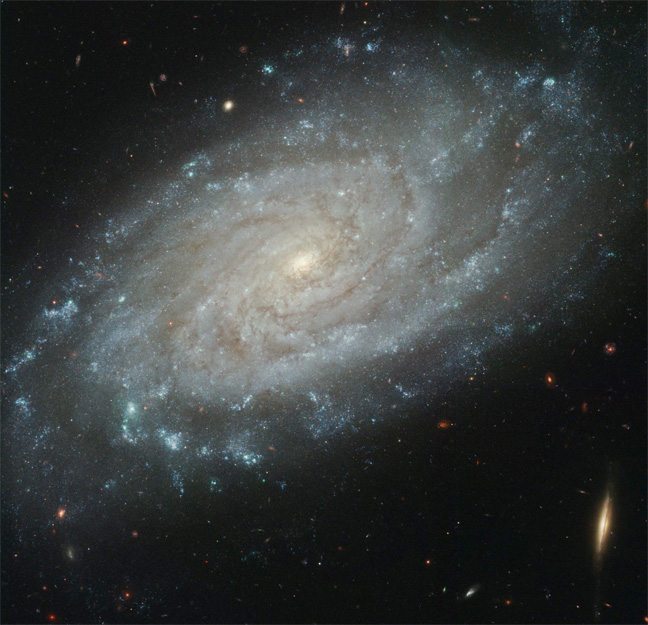
Astronomy 101 (Basic Astronomy) Honors Section

Instructor: Roland E. Allen
1-979-845-4341, Room 519 Engineering/Physics Building
allen@tamu.edu, http://faculty.physics.tamu.edu/allen/astr101.html
Office hours: 3:00-4:00 p.m. Monday, 3:00-4:00 p.m. Tuesday, 3:00-4:00 p.m. Thursday, or by appointment.
In the fall of 2008, Astronomy 101 is being offered for the first time as an honors course. The textbook is The Essential Cosmic Perspective, 4th Edition, by Jeffrey Bennett et al. This is a superb textbook, which should be read for enrichment and background beyond what is covered in class.
On the exams, you are responsible only for what is covered in class and in the homework.
But you should read through the assigned sections of the textbook to obtain a more complete and thorough understanding of what is covered in class. In addition, be sure to look through Appendices A-J, and become aware of the glossary and index. We will assume that you are able to find the relevant information in Appendices A-J (e.g., distance from Earth to Moon) when you do the homework.
Each discussion question in the homework should be answered in a short, well-written paragraph. The work in the numerical problems should also be clear and well-organized. These same guidelines hold for the exams, of course.
Evaluation:
Homework 35%
3 exams 45%
final exam (about one-half on last part of course, one-half comprehensive) 20%
Homework is due at the beginning of class each Wednesday. Homework late by < 48 hours, 1/2 credit. Homework late by > 48 hours, no credit.
All exams will be on Fridays: September 19, October 17, November 14.
Here are copies of some old exams, to illustrate the format only. The content of the exams for this semester will be quite different, of course.
An optional 10 minute talk can be given for extra credit equal to one homework set (i.e. 100 homework points). Time: 6:00 p.m., Monday, December 1.
Many interesting websites with astronomical images, information, and news are listed at astronomy-websites.html .
You may wish to download the free Stellarium software from http://sourceforge.net/projects/stellarium . It is great fun, and quite educational, to carry this software out at night in a laptop computer, and use it to find and identify objects in the night sky. Right now, for example, Jupiter is quite visible. If you had a small telescope, you could also follow Galileo in observing the 4 largest moons of Jupiter as they revolve around the planet and shift their positions over a period of days. Without a telescope you can observe the Moon and find a sizable number of the brightest stars, whose properties are described by Stellarium.
Reading: Chapters 1-6, 10-17 [7-9 & 18 optional, for fun]
HOMEWORK
September 3: 1 - 42, 43, 44; 47, 48 and 2 - 43, 45, 46; 47, 48
September 10: 3 - 39, 41, 42; 43, 44 and 4 - 42, 46, 47; 48, 50
September 17: 5 - 1, 3, 4, 5, 7, 13, 14, 15, 40, 41
September 24: 5 - 28; 43; 48, 49, 50, 51, 52; 54, 55, 56
October 1: 14 - 45, 46, 47, 48 and 15 - 9, 53, 55, 56, 57, 58
October 8: 14 - 5, 7, 8, 14, 16 and 15 - 3, 7, 14, 17, 22
October 15: 10 - 1, 2, 5, 7, 11, 15; 45, 48, 49, 50
October 22: 10 - 3, 4, 6, 8, 9, 12, 13, 14, 16; 46
October 29: 13 - 1, 2, 3, 4, 5, 6, 7, 8; 43, 46
November 5: 13 - 9, 10, 12; 25, 32 and 11 - 5, 6, 7, 8; 45
November 12: 11 - 12, 13, 14; 26, 31; 47, 48 and 12 - 4, 7, 13
November 19: 16 - 2, 11, 15; 48 and 17 - 3, 4, 6, 7, 9, 10
November 26: 6 - 2, 11, 13, 14, 15; 49, 52(a), 52(b), 53; 55